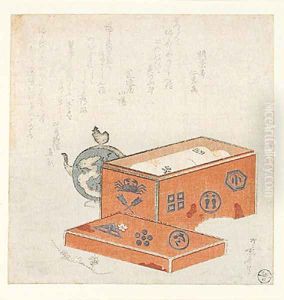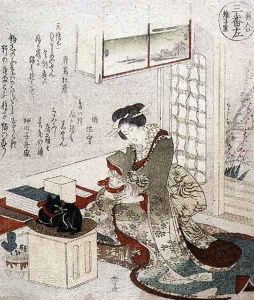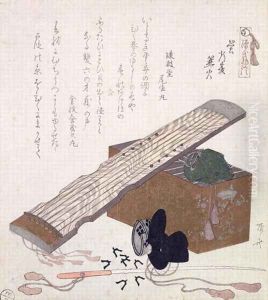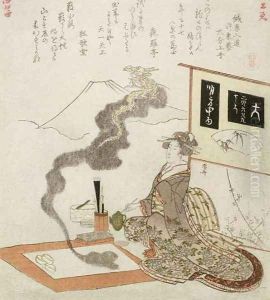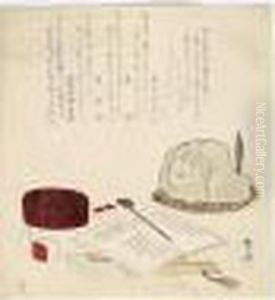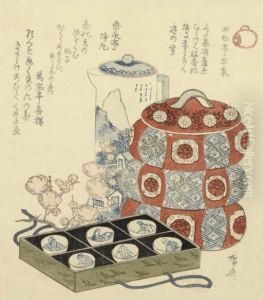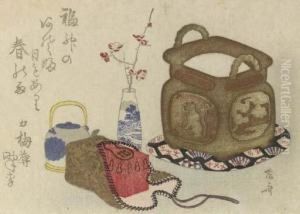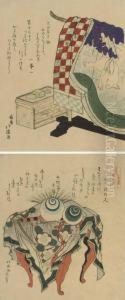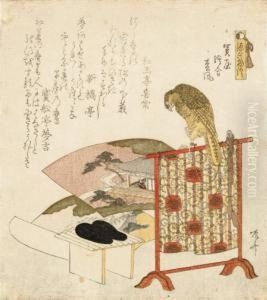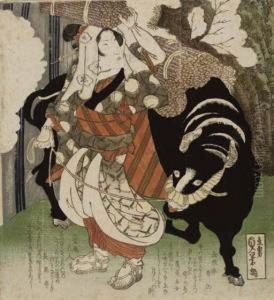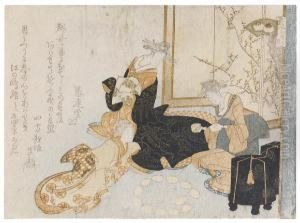Ryuryukyo Shinsai Paintings
Ryuryukyo Shinsai was a Japanese artist known for his ukiyo-e style woodblock prints and paintings. He was born around 1764, although the exact details of his birthplace and early life are not well documented. Shinsai was a prominent artist of the late Edo period in Japan, a time characterized by economic growth, strict social orders, isolationist foreign policies, and a flourishing urban culture.
Shinsai's artistic career began as a pupil of Hokusai, one of the most famous ukiyo-e artists of the time. Under Hokusai's tutelage, Shinsai developed his own distinct style, though he was clearly influenced by his master's techniques and subjects. He produced a variety of works, including single-sheet prints of beautiful women (bijin-ga), actors (yakusha-e), and landscapes.
One of the hallmarks of Shinsai's work was his attention to detail and delicate use of color. He often depicted scenes from daily life, capturing the subtleties of Japanese culture during the Edo period. Shinsai's prints were popular among the urban population, especially the middle class, who were the main consumers of ukiyo-e prints.
Shinsai's active period as an artist spanned from the late 18th century until his death in 1820. During this time, he contributed to the ukiyo-e genre, which experienced significant growth and innovation. His works are now considered important for understanding the artistic developments of the late Edo period and are held in various art collections around the world.
Despite his contributions, Ryuryukyo Shinsai is not as widely known as some of his contemporaries, such as Hokusai or Hiroshige, but he remains respected among scholars and enthusiasts of Japanese art for his contributions to the ukiyo-e tradition. His death in 1820 marked the end of his artistic journey, but his legacy continues through the prints and paintings that have been preserved.
